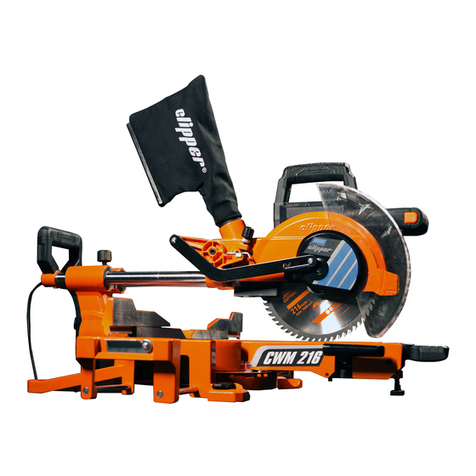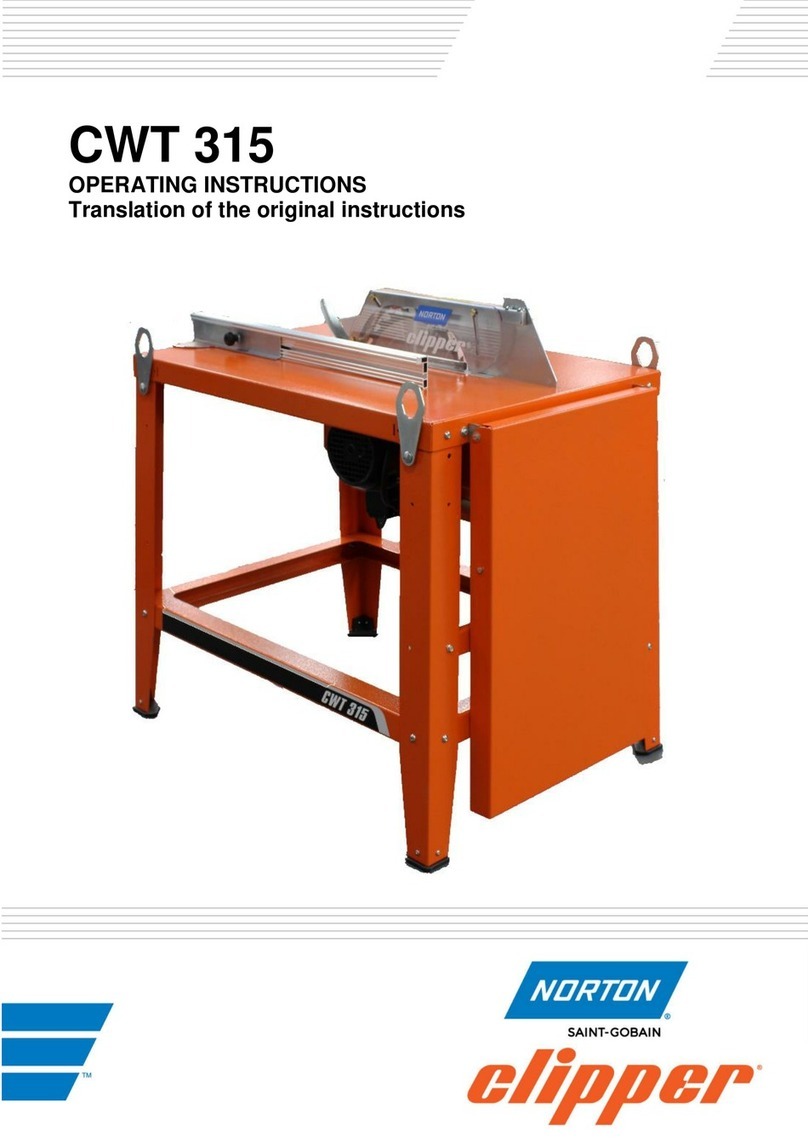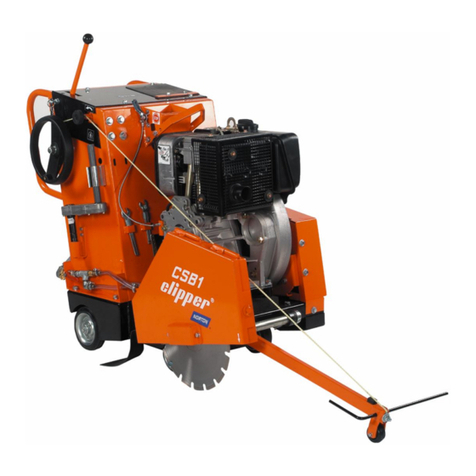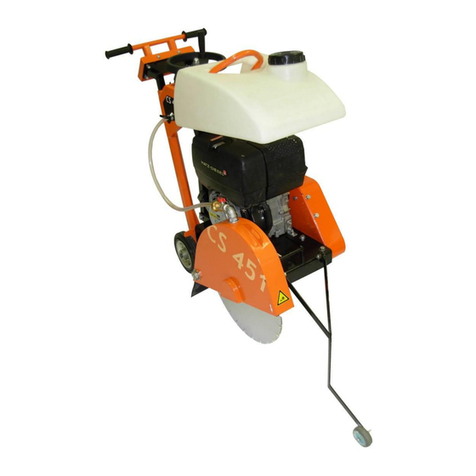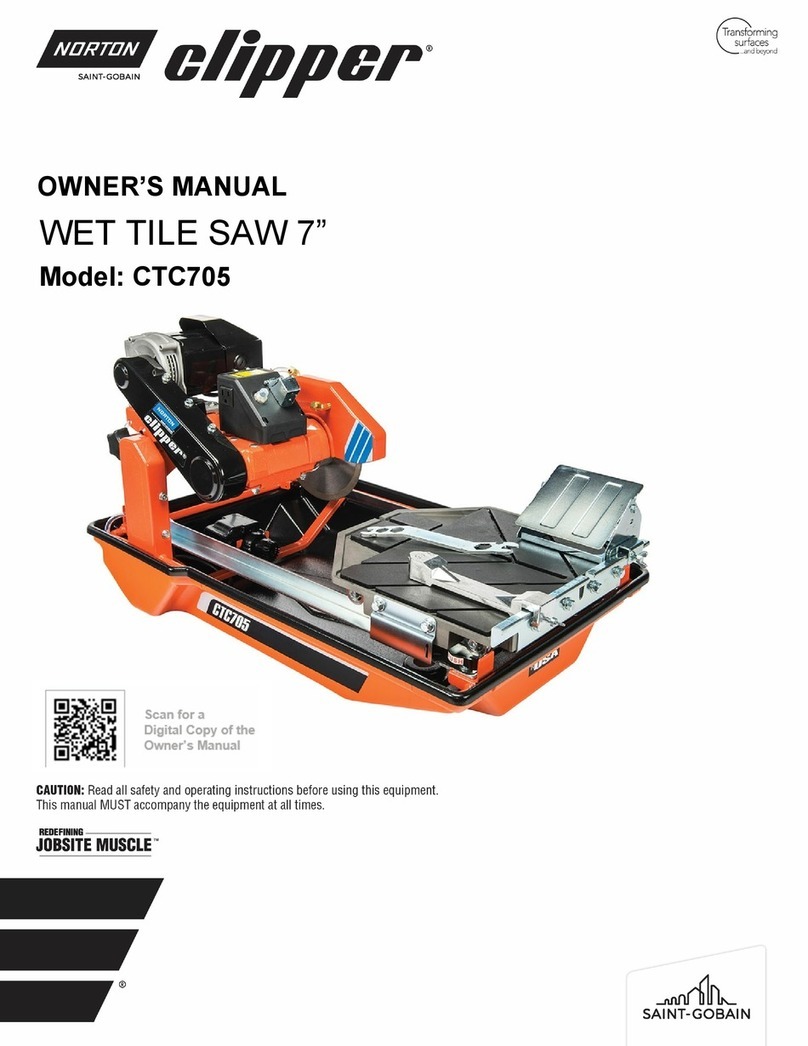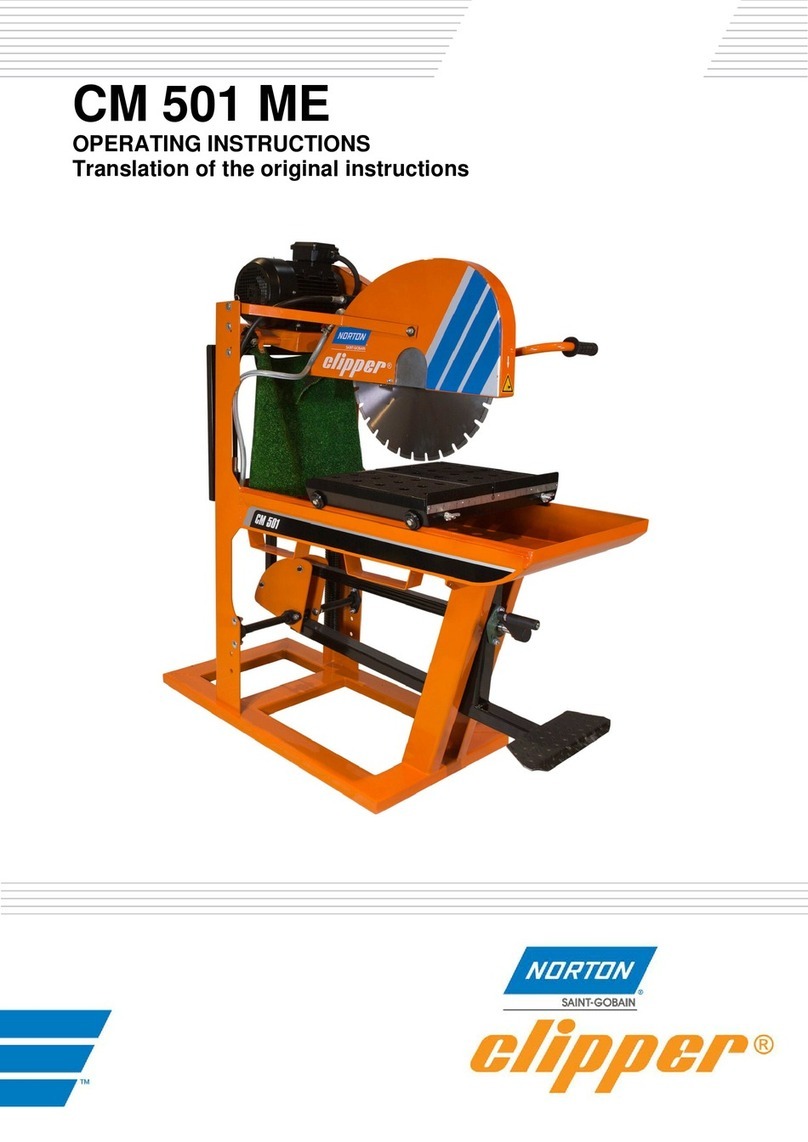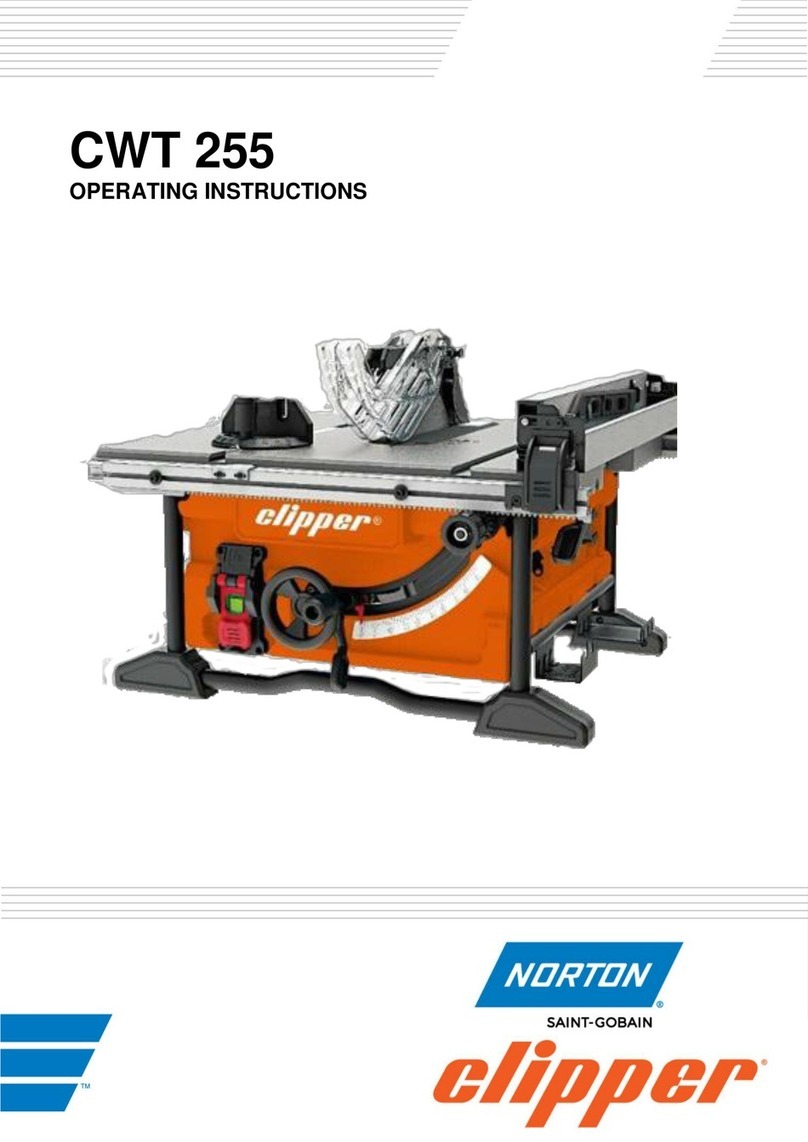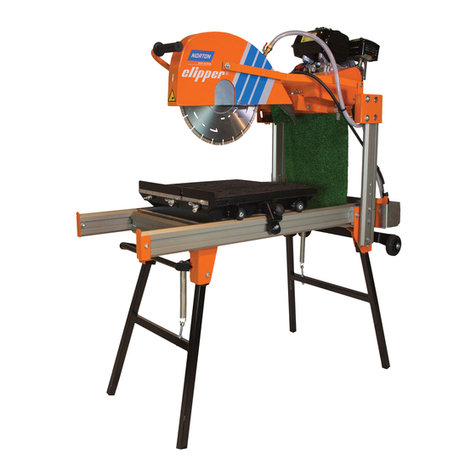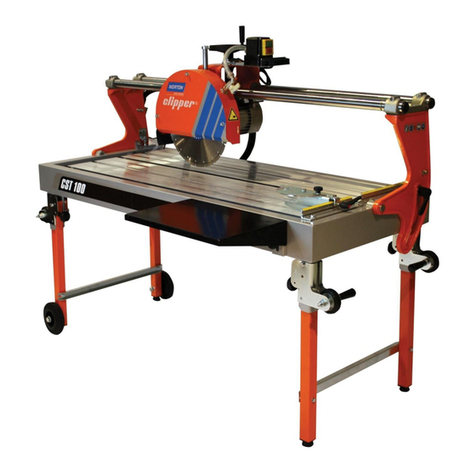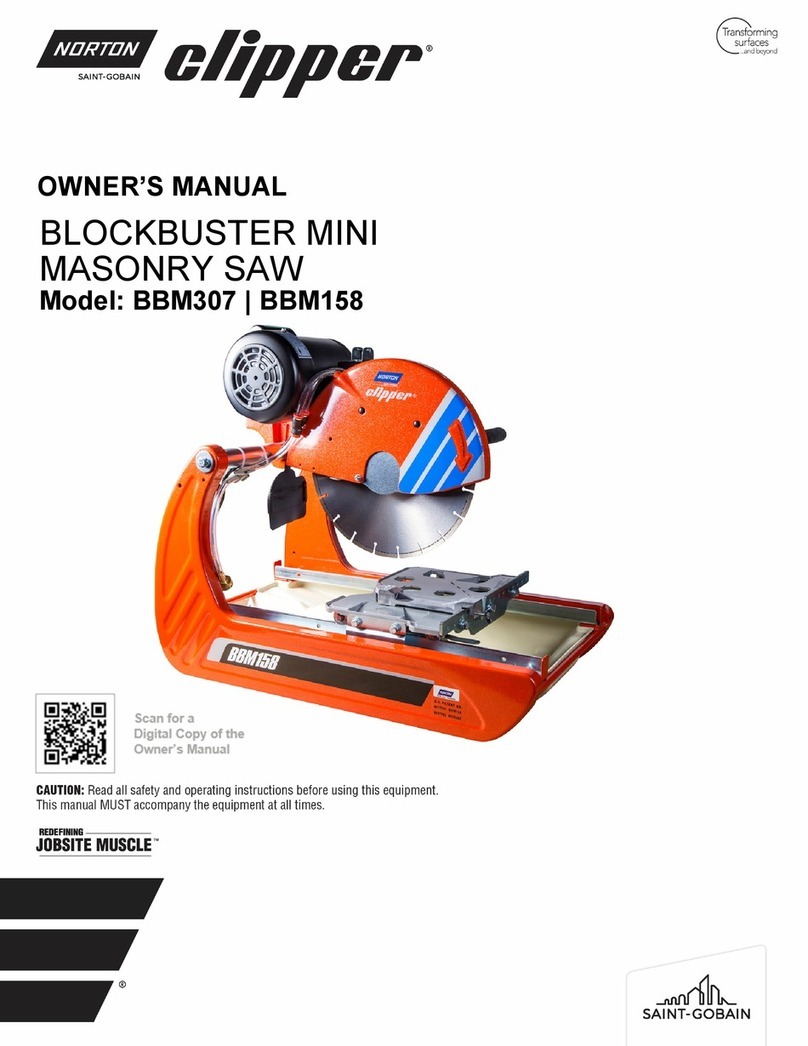
10
3 Assembly and commissioning
The machine is delivered fully equipped. It is ready for operation after assembly the diamond blade
and after connection to the appropriate power supply.
3.1 Assembly of the legs
Lift up one side of the saw, slide in the legs (with no wheels) to the front side of the saw. Lock the
wing nut to tighten the legs in place. Lift up the other side of the saw and slide in the legs with the
wheels. Lock the wing nut to fasten the legs in place.
3.2 Cutting head
You have to detach the cutting head by unscrewing the knob securing the head on the rail of the
machine.
3.3 Tool assembly
Only NORTON blades with a maximum diameter of 250 mm can be used with the TR 250.
All tools used must be selected with regard to their maximum permitted cutting speed for the
machine’s maximum permitted rotation speed.
Before mounting a new blade into the machine, switch off the machine and isolate it from the main
source of electricity.
To assemble a new blade, follow these steps:
Loosen on the two nuts holding the outer cover of the blade guard, and remove it.
Loosen the hexagonal nut (left threaded) on the blade shaft with the 30mm wrench, which holds
the removable outer flange.
Remove the outer flange.
Clean the flanges and blade shaft and inspect for wear.
Mount the blade on the arbor ensuring that direction of rotation is correct (check with the arrow
on the blade guard). Wrong direction of rotation blunts the blade quickly.
Replace outer blade flange.
Tighten hexagonal nut.
Retighten the two mutter screws maintaining the outer cover the blade shaft.
The blade bore must correspond exactly to the diameter of the blade shaft. Cracked or damaged
bore is dangerous for the operator and for the machine.
3.4 Electrical connections
Check that,
The voltage/phase supply corresponds to the information indicated on the motor plate.
Available power supply must have ground connection in conformity with safety regulations.
The connecting cables should have at least a 2.5mm2-section per phase.
